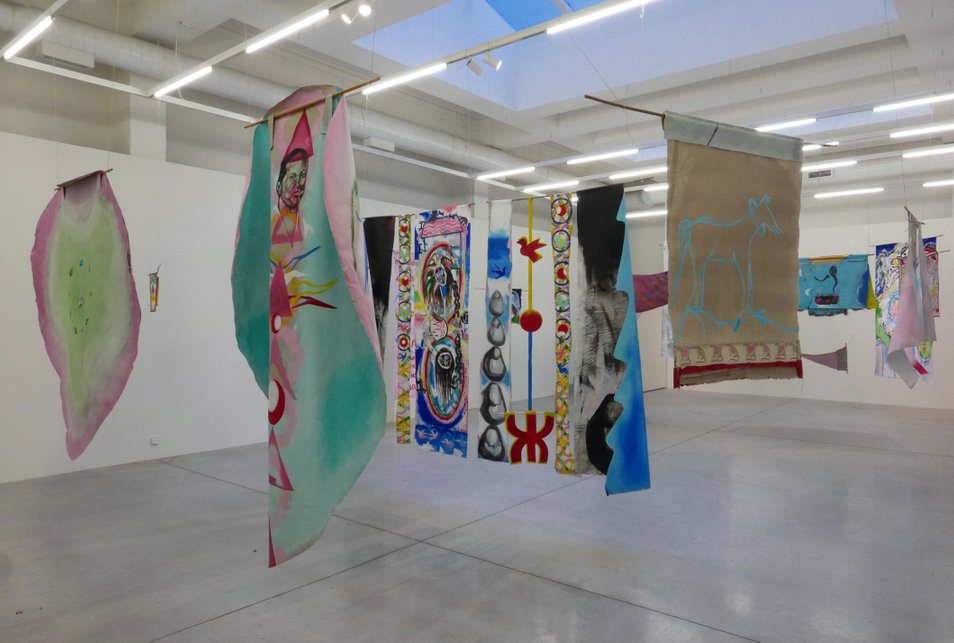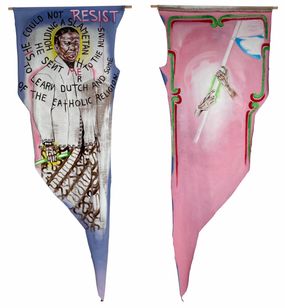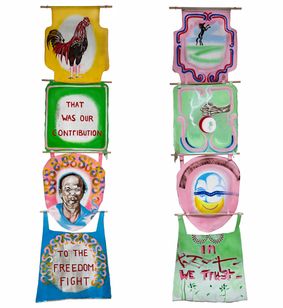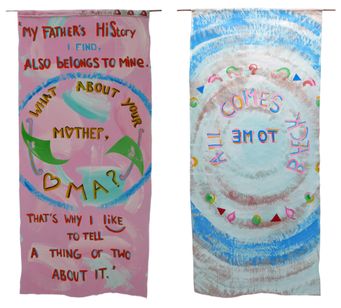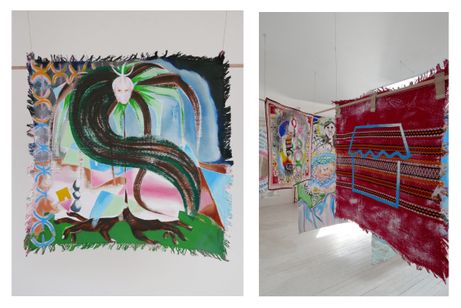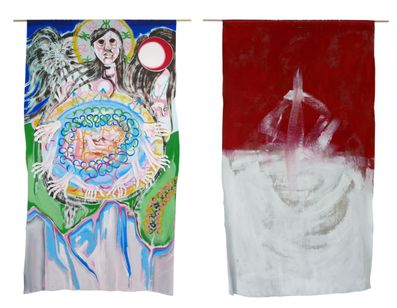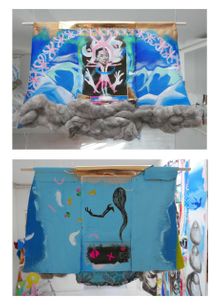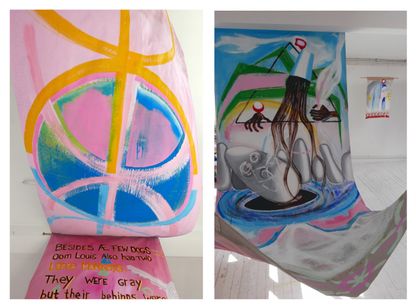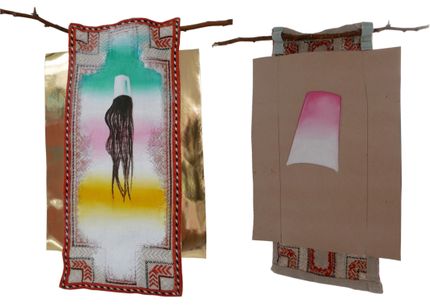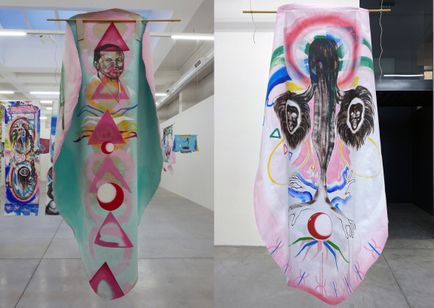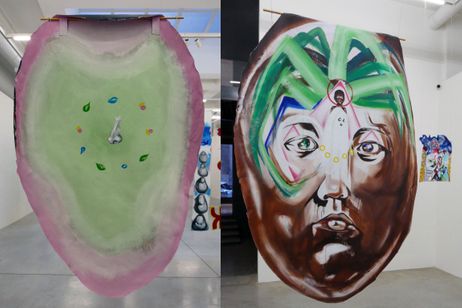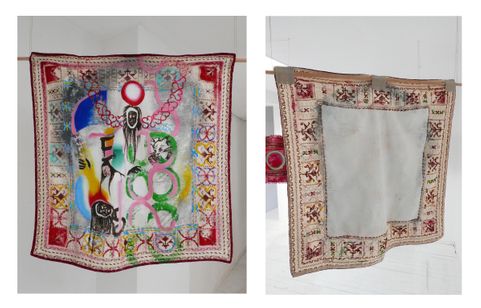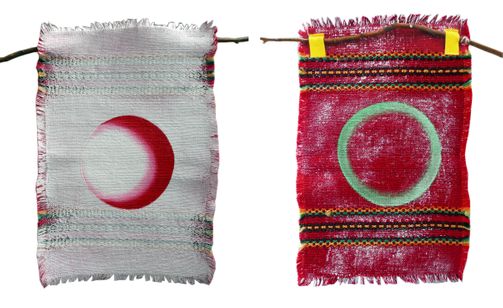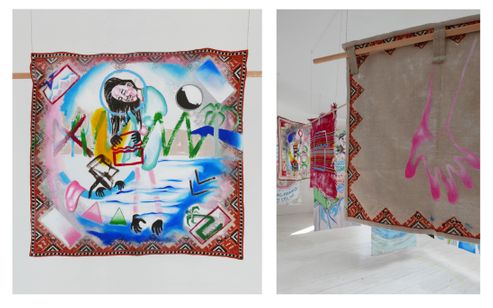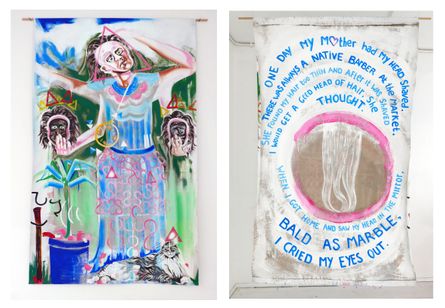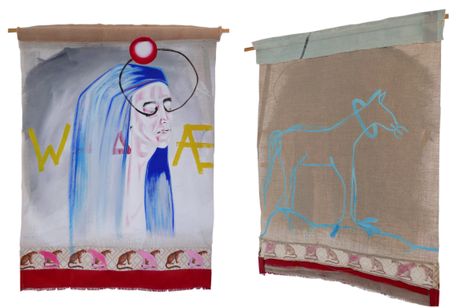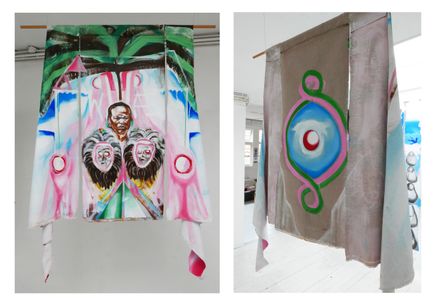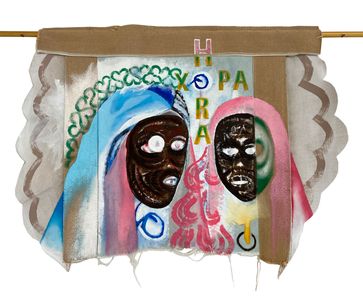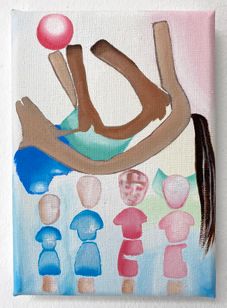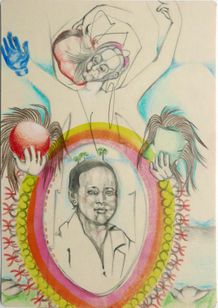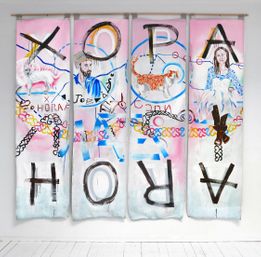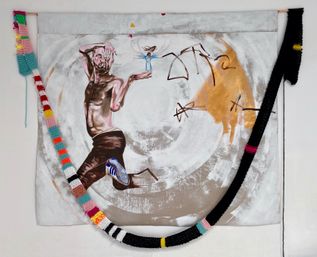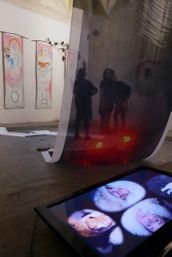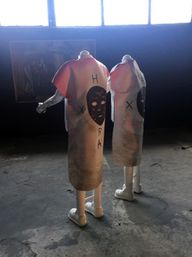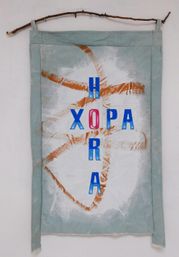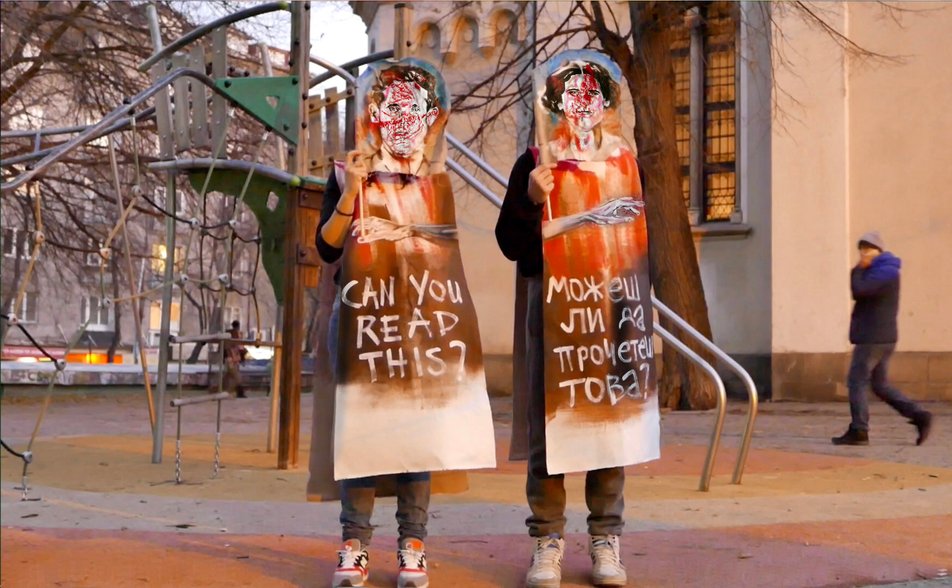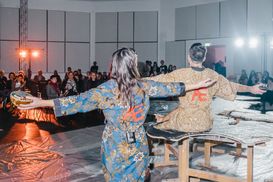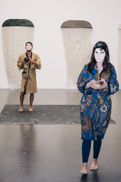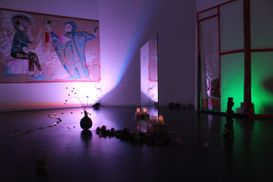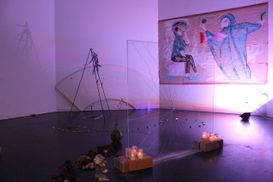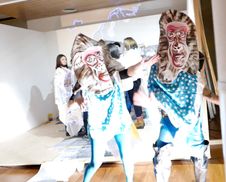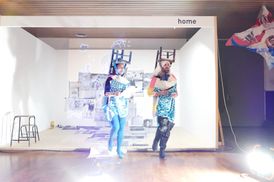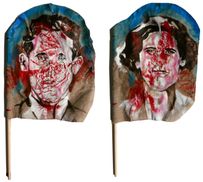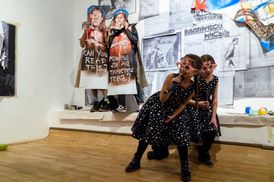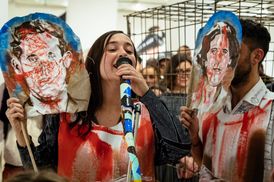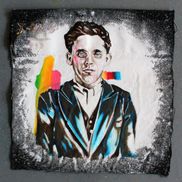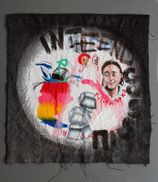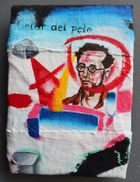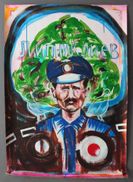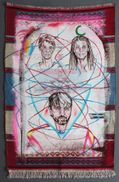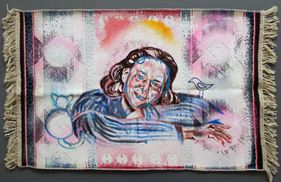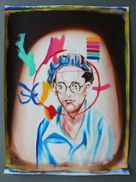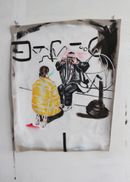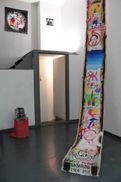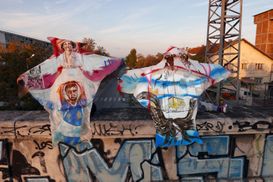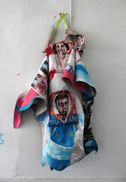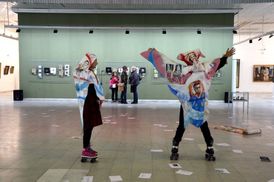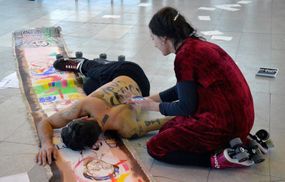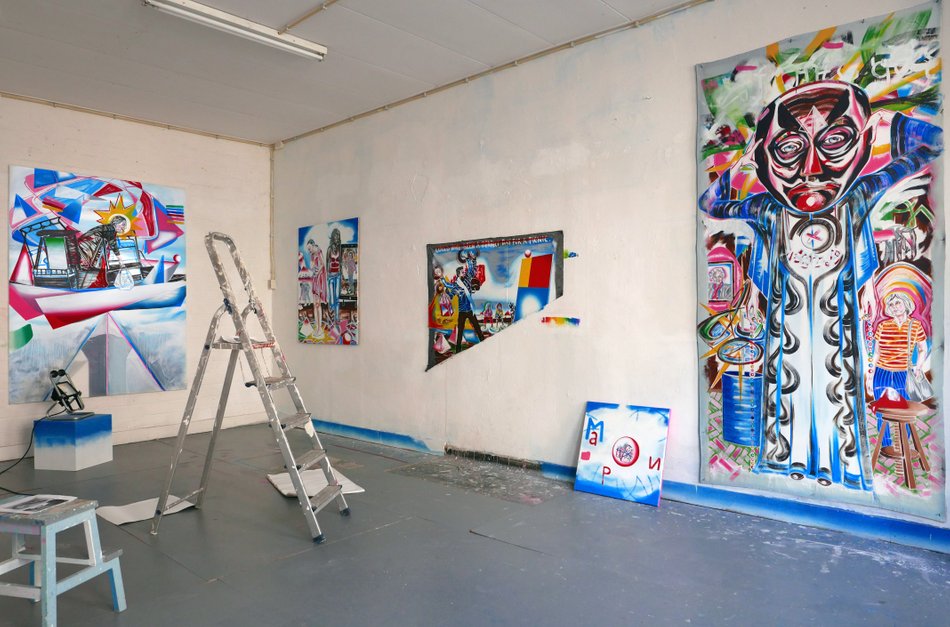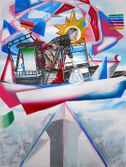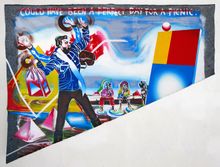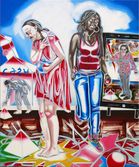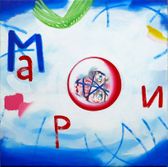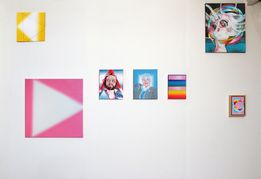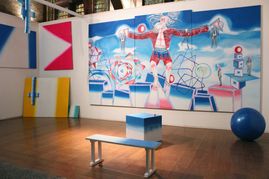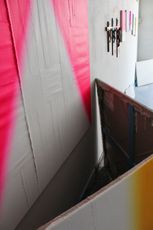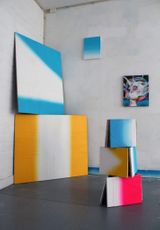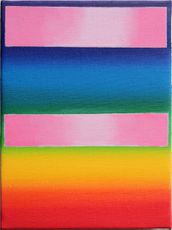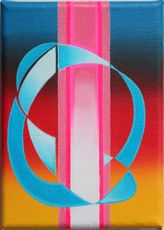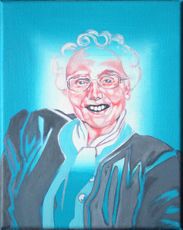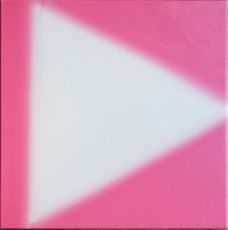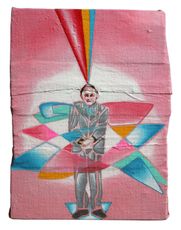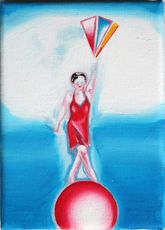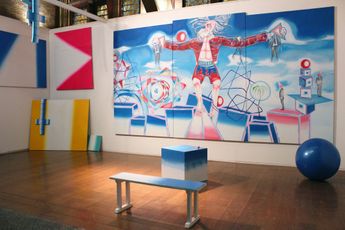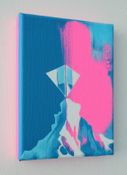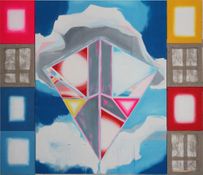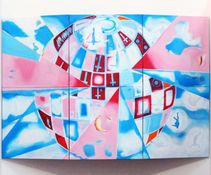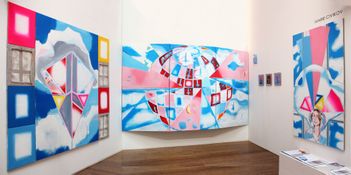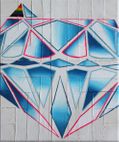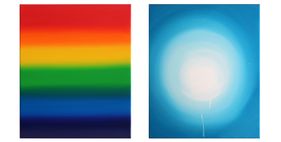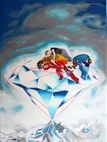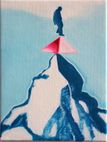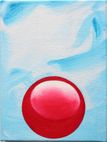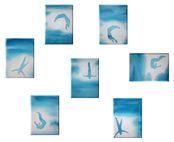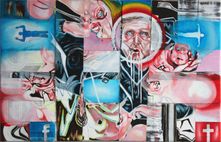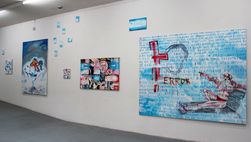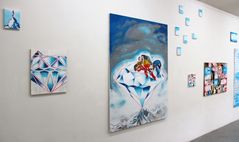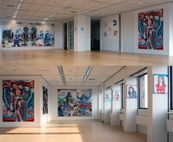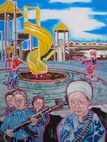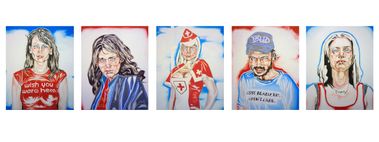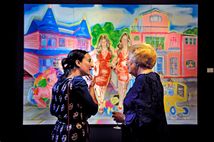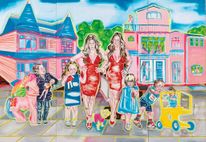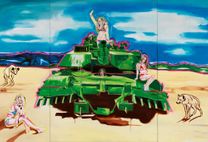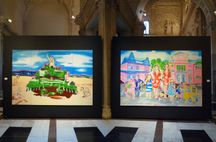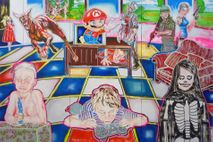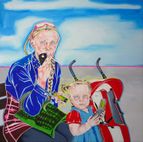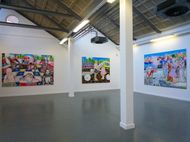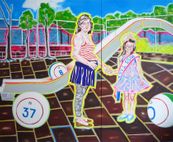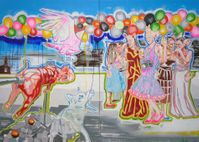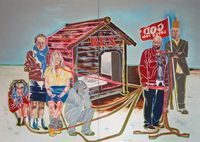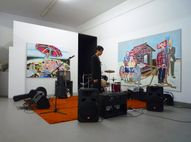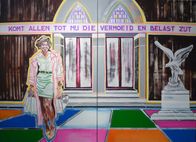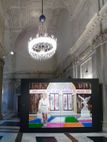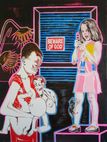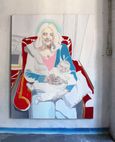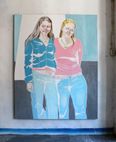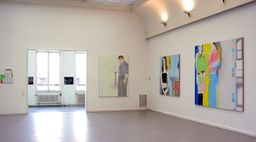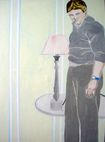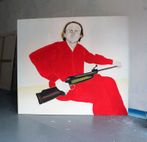M a R i E
C i V i K o V
These in-between unearthly worlds that occupy my being - instalation view - Structura Gallery Sofia, December 2022
In my work, I relate my personal family history to ethical issues about ancestry, history, ethnicity and family ties in both an (Eastern) European and Eurasian context. Emerging from creating a "wearable" form of my paintings, I currently work on loose canvases that are given their shape by the sewing machine from my East Indies grandmother's inheritance. In this way, each piece has indirectly passed through my grandmother's fingers, and thus through those of the generations that came before her, whose voices have long remained unheard and underexposed. Parallel to this, I am working on the unravelling of my grandmother's life story in the Dutch East Indies colony. This has intensified my curiosity about her Javanese mother, about whom relatively little is mentioned in this. Through my own interpretation, I bring her voice to life on canvases shaped as if they can be carried over your shoulders like a shell from the past and hang freely in space like relics. Visual aspects in my work related to my Bulgarian background are added to this and melt together.
2019 - 2020
Studio view - September 2020
2017 - 2018
The revolution will not die with us #2, Robotic Thought, collaboration/performance with Voin de Voin, video still teaser December 2017
2016 - 2017
Mijn recente werk heeft vooral betrekking op humanistische vraagstellingen in een surrealistisch aandoende setting waarin ‘gewone’ figuratie wordt afgewisseld met abstracte componenten in bijna overstraalde heldere kleurstellingen.
Een onderwerp dat veel, meer of minder aanwezig, in mijn schilderijen rondwaart is het onbekende van de dood. Tijdens mijn kinderjaren had ik soms angstdromen over de dood. Meestal kwamen ze wanneer ik half wakker met koorts op de bank of in bed lag. Met open ogen zag ik hoe donkere lijnen als draden op mij afkwamen. Eerst vloeiend en recht, maar al snel steeds meer golvend totdat ze in een grote zware knoop verstikkend op mijn deken drukten.
Deze knopen van lijnen komen sinds enkele jaren op verschillende plekken terug in mijn werk. Meestal symboliseren ze niet de angst, maar eerder het onvermijdelijke en het mysterie van de dood. Blijft er nog iets over van ons wezen als we er fysiek niet meer zijn? En indien ja, kunnen wij, mensen die van elkaar houden, elkaar dan nog ergens ontmoeten? Anderzijds ben ik geïnteresseerd in concrete onderwerpen die betrekking hebben op de Westerse samenleving van nu met haar omgangsvormen, spelregels en rituelen. Die tegenstellingen tussen het concrete en het metafysische vind ik een interessante combinatie waarmee ik graag speel in mijn werk. Mij gaat het er wel om het persoonlijke en particuliere zo nauwgezet mogelijk in mijn werk om te zetten in een beeldtaal die buitenstaanders nieuwsgierig maakt en toelaat in een wereld die ze niet kennen: identificatie noch herkenning zijn mijn doelstellingen; het gaat me eerder om toenadering door verwondering.
My recent work primarily concerns humanistic questions in a surrealistic setting in which 'normal' figuration alternates with abstract components in almost shone bright colours.
A subject that's always more or less present in my work is the unknown of death. During my childhood sometimes I had fear dreams about death. These were abstract dreams of dark coloured wires floating towards me through space. They occurred when lying in bed or on the couch with feverish flu. With my eyes open I saw them approaching me. At first they were straight and even but soon the wires were tangled together, became heavier and pressed their suffocating weight on my blanket.
Since a couple of years these knots of wires often are visible in my work. They don't as much symbolize the fear of death, but more the inevitability and mystery death brings with itself. Does anything of our spiritual being remain when we're physically not here anymore? And if so, is it possible for us, people who love each other, to meet somewhere? On the other hand, more concrete subjects concerning nowadays western society catch the same amount of my interest. These two, the physical and the metaphysical, I find interesting to combine. My intention is to convert the personal and private as closely as possible in my work in a visual language that makes outsiders curious and permits them in a world they do not know: identification nor recognition are my goals; it's rather about rapprochement by wonder.
Marie Civikov, Oktober 2016
Studio January 2017
2015
As a child, lying on the couch with feverish flu, I could sometimes dream with my eyes open. These were abstract dreams of wires floating through space. From the couch, from under the blankets and through the floating wires in the distance, I could see my parents, my brother and my sister sitting at the dining table. The wires that came down on me – still nice at the beginning, light in weight but dark in colour, straight and even – had a calming and reassuring quality, but never for long. Soon the wires became heavier and pressed on my blanket, causing slight panic. And what I always tried to avoid at such a time (by thinking “stay calm, stay straight”), inevitably happened: the wires were tangled together and that meant death.
This is one of the associations that came to my mind when looking at (a detail of) my work, which today often shows coloured irregular webs. At this time most of my work is created without a plan, impulsively, often inspired at the moment, the works elaborating on each other.
installation This Art Fair - december 2015
2014
In the series of paintings I've finished in 2014, symbols that are well known in Western culture transform and are given a new meaning. This way a holy cross turns into an intersection or an unfolded cube; when numbered, it becomes a dice cube.
Once there was an American doctor who, after weighing six patients during their dying process, concluded that 21 grams is the mass of the supposed soul. A baby's heartbeat starts at approximately 21 days and a dice cube has 21 dots (in Dutch we call those "eyes"). Life, so it seems, is a matter of luck.
In Heavy Refraction of Light, not only the light is broken in a crystal that is too heavy to lift; the work itself is made up of broken pieces of linen, consisting of several canvases. At places where I could not stand the colour (I have a love-hate relationship with colours), the canvases are reversed, making visible the intersections of the composite pieces of linen on the back. In this way, there is always the option to take a new path.
2013
2009 - 2012
2002 - 2008
